==================
A Caveat and Affiliates
First off, a little caveat: within my articles you will find affiliate links, meaning if you buy them, I get a small commission. Your cost is not affected. In addition, I am an Amazon Associate and I earn from qualifying purchases on Amazon.
And yes, if I say that I recommend a product here, it means I truly believe it is a good product. I refuse to recommend any product that I have not researched and believe to be a good value.
Even better, I provide you with a very clear picture of the product, it’s use, and the probable value.
Earning your trust is important to me. I run this website myself and the commissions and donations help support the site.
Sound reasonable and fair enough? Let’s continue to the article.
==================
What Plants You’d Recommend to Newbies
Plants not only make your home and yard look gorgeous. They help reduce noise, provide shade, and cool the surroundings. Most likely, it would take garden enthusiasts and pros to make that happen. What if one had zero knowledge of gardening but had a passion for it? There must be plants you’d recommend to newbies who are friends or neighbors. And maybe you should beef up your own and expand them.
Or if you are new to plants and gardening, you may not know where to start. You might be worried that you would choose something that required a lot of upkeep and the yard could end up looking worse than before you started. Below are five plants for people who are new to gardening and landscaping but still want a high-quality look. Each variety has its benefits and drawbacks. So, make sure to do some research on them before buying or adding them to your yard and garden.
Plants You’d Recommend to Newbies Highly
1) Cosmos (Cosmos bipinnatus)
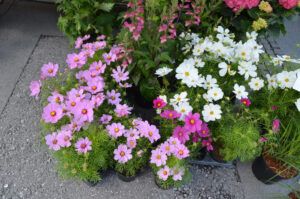
Some plants you’d recommend to newbies and friends
You should consider this plant if you want an attractive flower with minimal effort to grow and take care of it. It’s one of those ideal plants for beginners to grow with confidence. It has been described as “easy care” by many customers in online forums. However, it does need ample water when it is in full bloom, so stick with this one if there is a steady, reliable source of water in the garden. There are species of cosmos whose flowers are white, yellow, pink, reddish pink, and more.
2) Zinnia (Zinnia elegans)
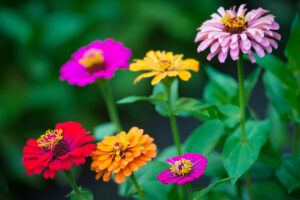
Different colors of beautiful Zinnia flowers
This is another great plant for people who want great beauty but also do not have to invest much energy into getting it there. It grows fairly quickly, so you can enjoy its blooms for longer than most other types of plants. Zinnias are well suited to the warm climate and dry soil, which means that they are hardy enough to thrive in many common garden conditions. The bright, attractive colors of zinnias may attract insects over time. But that would lead to cross-pollination, which is good.
3) Hibiscus (Hibiscus rosa-sinensis)

Red Hibiscus Flowers, flowering plants you’d recommend to newbies
These flowers give you one more option if you are looking for something bright and beautiful without too much additional effort on your part. It might be difficult for a new gardener to keep alive, but the reward is worth the risk. These flowers are extremely hardy and can handle heat or cold better than most other plant varieties. You might have trouble with them if you live in an area that does not experience mild weather partly in a year. Additionally, they should be placed near a source of water, so look for one if you are thinking about introducing hibiscus into your garden.
4) English Ivy (Hedera helix)

Leaves of English Ivy
This type of ivy has been described as “the perfect choice” by many customers online. It requires very little upkeep, has lush green foliage throughout the year, and tolerates both hot and dry climates. Even ones that go through frequent temperature changes or drastic temperature shifts can survive. However, you should be careful with this plant regarding children and pets. It can trigger choking on food or difficulty in swallowing, called dysphagia. Children eating too much English Ivy could lead to fatal consequences. The bottom line, make sure that people and animals are advised to stay away from these plants if they are growing in your garden.
5) Creeping Charlie (Glechoma hederacea)

Fresh Creeping Charlie Herb
If you live in the United States and want to grow something that will work well as a ground cover, this is your best bet. It spreads out easily and quickly, which means that it can help keep weeds away from other plants. Creeping Charlie is great at controlling humidity levels around other types of vegetation. So, it might be helpful if you live in an area with very dry or very humid weather. However, make sure to use this plant sparingly- it spreads easily and doesn’t discriminate between good grass and bad grass.
These are five of the best plants for beginners in gardening to grow. But, still want a high-quality appearance for their home or property without having to spend a lot of time maintaining them. Definitely, they’re plants you’d recommend to newbies and would want in your own garden.
Plants Not Recommended for Newbies
1) Azalea (Rhododendron azalieum)

Blooming Red Azalea Flowers
This plant has been described as dangerous by many customers who have had multiple run-ins with it on their property. It requires constant upkeep to look its best. It will die when not watered daily. Like when you go on vacation and no one is left to take water it. If taking care of plants regularly is not your thing, this is not the one for you. Additionally, allergies or asthma sufferers might also want to give this one a miss. Azalea releases allergenic pollen when in full bloom.
2) Geranium (Pelargonium x hortorum)

Blooming Flowers of the Geranium Plant
While they look beautiful, geraniums aren’t a great choice for first-time gardeners. They need very specific conditions to thrive. You’ll need a constant source of water and fertilizer for these plants to look their best. So, if you can’t have those things on hand you might want to pick from the other five recommended plants. In addition, they are known as “thuggish” or aggressive. This means that once one shows up on your property it is likely to spread throughout it as well as onto your neighbor’s properties. If this is something that bothers you, stick with another plant instead.
3) Texas Bluebonnet (Lupinus Texensis)

Texas Bluebonnet Wildflowers
Bluebonnets appear stunning when in bloom, but they need a lot of work even after they have grown to full maturity. Many customers have reported that they are almost impossible to kill, but this is an exaggeration since it takes time for them to grow and mature. It might be worth it if you enjoy coming home every day to find your yard looking exactly the same as when you left it, which some people do. However, if you want more of a challenge in your garden space or like variety with your gardening projects then stick with the other recommended plants on this list.
4) Yarrow (Achillea millefolium)
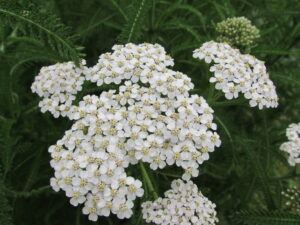
Yarrow Flowers and Leaves
Yarrow is another plant that can survive in many different climates- something that newbie gardeners tend to appreciate. However, there is one major downfall: you’ll need two of these plants for every person on earth for them to spread at a rate that you can handle. Additionally, they only grow to their full potential in areas where the soil is very sandy or very rocky. If you don’t have something like this on your property, yarrow will take over and look ugly while doing it. So, if you want a beautiful yard, avoid these plants completely.
Tips When Choosing Plants for Newbies
When trying to decide what plants are best for your home, learn which ones are easiest to care for. Many of these plants will also provide an array of benefits like reducing air pollution or improving soil quality. If you need plants that won’t require a lot of attention but still give you plenty of return on your investment, here are some suggestions:
Plants for Treated Areas
New pavement is often treated with chemical additives before they are laid down to make them last longer. These treatments usually contain krypton or zirconium oxide. Both emit harmful gases into the atmosphere while reacting with water vapor present in the air. Luckily, some plants can be planted on top of new pavement without deteriorating the surface below. It will allow these gases to escape into the atmosphere.
Some of these plants include:
American Beautyberry (Callicarpa Americana)

American Beauty (Callicarpa Americana)
The berries look beautiful in autumn and provide a habitat for migratory birds. They also help control soil erosion by holding onto moisture during periods of drought
Musk Mallow (Malva moschata)
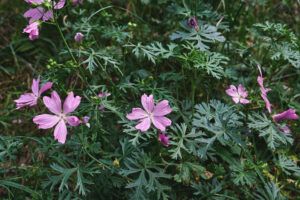
Musk Mallow (Malva moschata)
This plant is not just aesthetically pleasing, but it also attracts pollinators into your yard while helping to reduce air pollution in treated areas
Virginia Wild Rye (Elymus virginicus)–
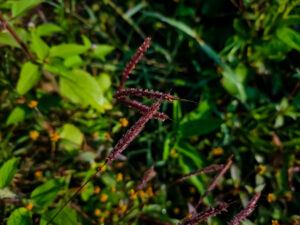
While this does require moist soil, it grows very fast and can handle moderate foot traffic throughout the year.
Plants for Stressed Areas
If your yard is filled with patches of dead soil, you’re not alone- many yards have this problem after years of people trying to grow plants that just don’t belong there. Luckily there are plants that can flourish in these conditions and provide a beautiful landscape. Some of these plants include:
Hens and Chicks (Sempervivum)

Hens and Chicks
This plant thrives in areas where other plants can’t survive due to poor soil quality. So, if your yard has a lot of cracks or dry parts this might be an ideal option for you.
Lantana (Lantana Camara)

Lantana plants in bloom
While it is considered an invasive plant in many places, lantanas are hardy and can grow very well even in poor soil. They also attract pollinators into the yard while providing additional benefits like repelling mosquitoes.
Creeping Fig (Ficus pumila)–
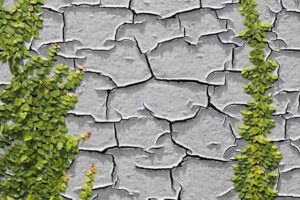
Creeping Fig scientific name Ficus pumila
This vine-like plant grows quickly and enhances the surroundings for relaxation. It also improves soil quality by adding organic matter. The leaves are also deep green which helps nearby plants look more vibrant.
Plants for Polluted Areas
Many areas suffer from air pollution that prevents plants from growing properly or at all. Other areas may have water that contains hazardous chemicals but still allow plants to grow. However, you should always check the soil quality in these areas before planting. Some plants to consider include:
Virginia Buttonweed (Diodia virginiana)
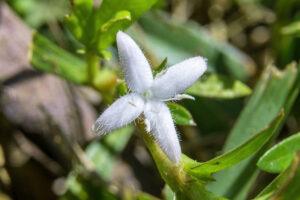
Virginia Buttonweed
This plant thrives in poor or polluted soil conditions and can help improve your yard’s overall health by improving the structure of the soil
Turmeric(Curcuma longa)
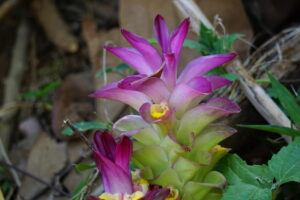
Flower of the Turmeric Plant
If you need a plant that improves poor soil quality while adding beauty, turmeric is a good option. It requires moist soil but grows quickly with small yellow flowers that attract pollinators.
Butterfly Bush (Buddleja davidii)

Butterfly Bush
A great choice for hard-to-grow plants, butterfly bush can improve air quality and remove excess nitrogen from the environment. This plant provides nectar for butterflies and hummingbirds as well.
Of course, the best choice is to use a plant that can work for your specific situation and environment, but these are some good options if you’re unsure. If your yard needs help recovering from years of neglect, be sure to choose plants often used as landscaping in your region. They will adapt to the conditions there.
If you must remove any existing landscaping or need assistance removing hazardous chemicals from your soil, ask a professional instead of doing it yourself. The wrong choices could make recovery much more difficult
Easy Houseplants to Take Care Of
Houseplants are a wonderful addition to any home. They add color, and life, and even cleanse or purify the air in your home! Don’t hesitate to browse online and get some inspiration from other websites focusing on home and gardening. that Here are some easy houseplants that require very little care:
Pothos (Epipremnum aureum)

Devil’s Ivy aka Golden Pothos
This plant literally thrives in neglect and requires almost no attention at all! It also doesn’t need much light so you can place it anywhere you please inside your home
Snake Plant (Sansevieria trifasciata ‘Laurentii’)

Snake Plant (Sansevieria trifasciata ‘Laurentii’)
These amazing plants remove nitrogen from the air. This makes them great for improving indoor air quality if you place them in your living room or bedroom. They also convert carbon dioxide into oxygen at night which helps keep CO2 levels down while you sleep!
Peace Lily (Spathiphyllum)
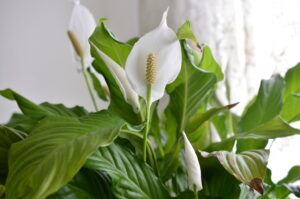
Flowering Peace Lily Plant
These beautiful plants add a pop of color, but they also cleanse the air by eliminating mold spores and other harmful pollutants from the air. They require low light and moist soil so you can even keep them even in your bathroom.
ZZ Plant (Zamioculcas zamiifolia)
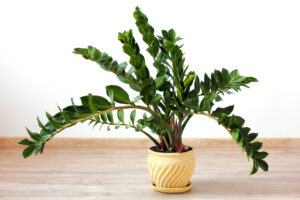
Potted ZZ Plant
This plant will survive even if you neglect it. And it require very little water! It can store large amounts of moisture in its leaves, which makes it a great addition to your living room. Your only job is to make sure it gets good light as well as enough humidity to keep the leaves from drying out too much
Caring for houseplants doesn’t have to be difficult. With a little research, you’ll find that they’re also a great addition to any home!
Tips in Taking Care of Low Maintenance Potted Plants Indoors
Potted plants are usually more low maintenance than their outdoor counterparts, but they still require some care. Here are some tips to help you keep your potted plants thriving indoors:
1) Choose the right tools.
Potted plants will do best if you use a tool or strategy that helps cut water off at the roots. Watering should never be done overhead as this encourages rot and fungus growth along the stems.
2) Learn about your plants’ needs.
Potted plants need to get enough sunlight, good drainage, and good potting soil to thrive indoors. If you’re unsure which plants will do best in your living space, ask a local nursery or garden store for advice.
3) Water sparingly.
It’s recommended to water potted plants thoroughly when you first bring them home. But after that, water your plant only if the soil is dry. It’s even better to water just enough so that the topsoil layer feels moist and not drenched.
4) Err on the side of too little light.
Many potted plants need sunlight to flourish, so try to place them near a window where they can receive indirect sunlight. They should never be placed next to glass windows because this can cause excess moisture around their leaves and stems
5) Check for pests regularly.
Use the tips of your fingers to check for signs of bugs or insects on potted plants. If you find any, remove them carefully with soap and water before they infest other plants.
6) Repot as needed.
If you notice that soil is spilling out of the cracks in the pot’s bottom, it’s time for a new pot. The best time to repot potted plants is early spring when temperature readings are cool
7) Check plant health weekly
Potted plants should look healthy and vibrant all year long! However, if you notice their leaves turning yellow, brown spots appearing, or wilting occurring frequently, these can be signs that your plant isn’t getting enough water. Follow the steps above to make sure your plants are getting the proper amount of care and water. Remember, taking care of potted plants is easier than you think!
Conclusion
If you are new to planting and gardening, you will discover find many plant species that are low maintenance or easy to care for. By choosing some of the plants described in this article, you can make sure your new indoor garden will look beautiful without too much work. As you learn more, you’ll get to know more species of plants you’d recommend to newbies.
READ MORE:
